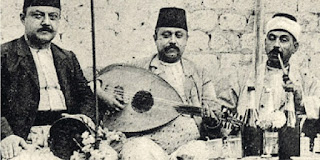Photo Credit: Academy of Ancient Music, UK (http://www.aam.co.uk)
He took the oud home and over the next month cleaned it up, re-stringed it, and played and played it. One day he made a cup of tea, set it down on the table next to the oud, and wondered into another room to look out the window waiting for his tea to cool. He began to hear lute music. The music was so beautiful it brought tears to his eyes. Standing there spellbound, Daniel stayed in front of the window until, eventually, the music faded. That is when he realised he had purchased a haunted artefact – a haunted lute. He was able to reproduce the music, finding that the conditions must be exact or the oud would not "perform": you must place hot tea in front of it and leave the room. Later that year he happened to be walking by the oriental carpet store he had purchased the oud and stepped in. The owner and his son instantly recognised him. Daniel remarked, “That oud you sold me; that is a pretty amazing instrument”. The owner simply replied, “Yes it is. It belonged to my Dede (my grandfather). He bought it from an old peddler in a pazar (a weekly open air market) in Turkey. He also found out how special it is. He would be glad you know it has a new home with you.”
Illustration
3: Turkish Tea. Image by friend Soydan Ustunergil, used by
permission.









